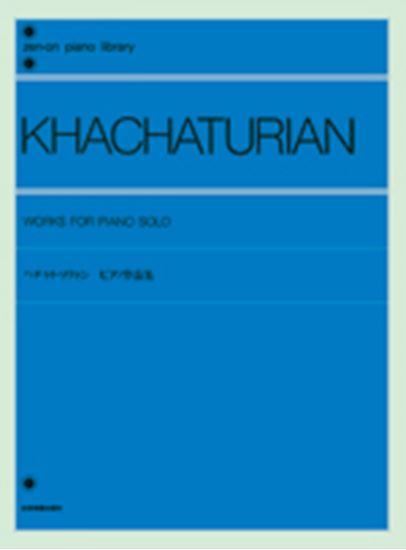Khachaturian, Aram : poeme
Work Overview
Publication Year:1929
First Publisher:Muzykalny sektor, Erevan
Instrumentation:Piano Solo
Genre:character pieces
Total Playing Time:7 min 00 sec
Copyright:Under Copyright Protection
Commentary (1)
Author : Ooi, Kazurou
Last Updated: March 12, 2018
[Open]
Author : Ooi, Kazurou
For teachers assigning this piece to students, or for learners who intend to play it voluntarily, we will proceed on the assumption of a certain level of understanding of Khachaturian's music. This piece is one of Khachaturian's lesser-known piano works and is certainly classified as a niche work. However, for those who understand Khachaturian's musical language, it is by no means surprising to become captivated by this piece. Should this be your first encounter with Khachaturian's music, we strongly recommend that you first listen extensively to his works. Orchestral works are particularly essential listening. This piece is characterized by strong orchestral elements and numerous spectacular features unique to Khachaturian. Reproducing these on a single piano necessitates evoking the diverse timbres of an orchestra.
Conversely, many sections demand lyricism and improvisational qualities. Many chords used in the piece include dissonances such as major sevenths. It also encompasses mysterious and otherworldly, phantasmagoric elements. Performers should first conceptualize, by analogy with an orchestra, which instruments are playing, and whether the instrumentation is extensive or sparse. For example, measure 49 is a moment of immense drama that must progressively overwhelm the audience. This section should be considered a tutti. Furthermore, the lyrical section from measure 78 and measure 107, for instance, should be interpreted as a single solo instrument or a small ensemble.
Rhythm
Another extremely important point to note is rhythm. The piece fundamentally progresses continuously, without interruption, except in lyrical sections where specific indications like rubato are written. In such instances, the rhythm must be strictly observed. For example, at the beginning, he writes a double-dotted rhythm with a 32nd note. Consider, for instance, why it was not notated as a dotted eighth note followed by a sixteenth note. Incidentally, for similar rhythmic material, in measures 113-120, he removes the double dot, using only a dotted note plus a 16th note rhythm. Reflect on how much the double dot intensifies tension, and how much the single dot allows for emotional relaxation. And strictly adhere to the rhythm. Detailed tempo indications are precisely notated; therefore, for other sections, proceed straightforwardly.
Form
The form is ABA. It is divided into A (measures 1-57), B (measures 58-120), and A (measures 121-216). The A section proceeds in a straightforward manner, whereas the B section necessitates considerable improvisation and rubato. The B section should be performed with freedom. This form corresponds to that of his Toccata. In that Toccata, too, the B section is lyrical and improvisational. For your reference.

